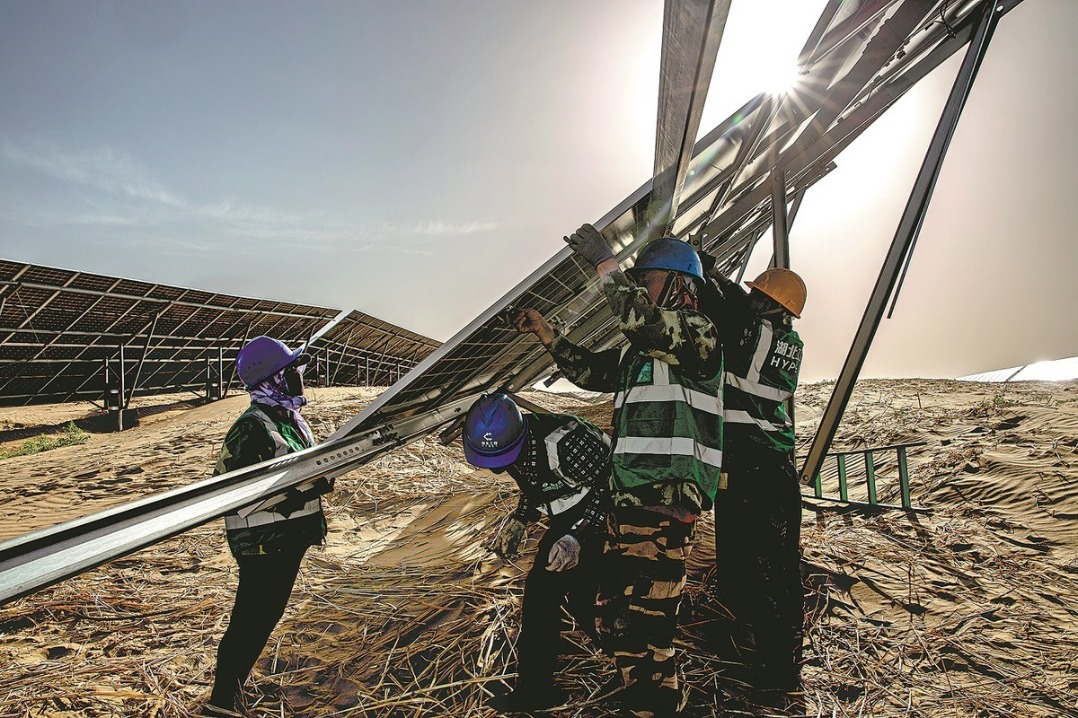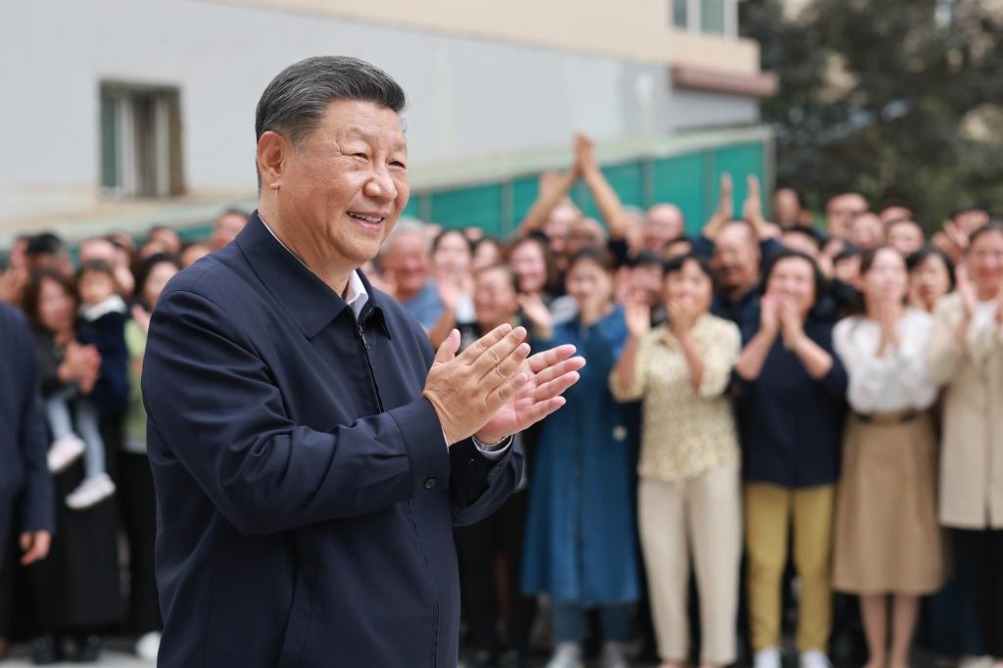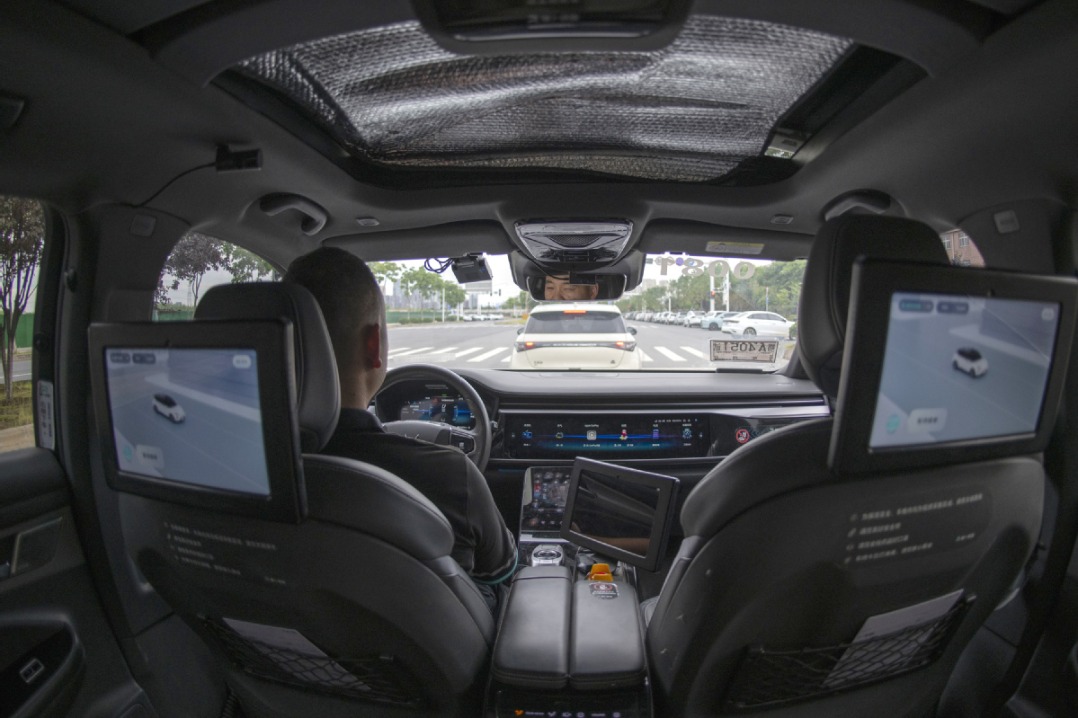Tone setter
Malaysia has blazed a trail for ASEAN's relations with China

Editor's note: The world has undergone many changes and shocks in recent years. Enhanced dialogue between scholars from China and overseas is needed to build mutual understanding on many problems the world faces. For this purpose, the China Watch Institute of China Daily and the National Institute for Global Strategy, Chinese Academy of Social Sciences, jointly present this special column: The Global Strategy Dialogue, in which experts from China and abroad will offer insightful views, analysis and fresh perspectives on long-term strategic issues of global importance.

Half a century ago, much to the surprise of the world, Malaysia emerged as the first member state of the Association of Southeast Asian Nations to establish diplomatic ties with the People's Republic of China.
The bold move raised many eyebrows across the world as it came amid the headwind brought about by the Cold War ideological face-off. Instead of rallying behind the West, the then Malaysian prime minister Tun Abdul Razak Hussein sought to pursue the collective dream of ASEAN in creating a zone of peace, freedom and neutrality (ZOPFAN) in Southeast Asia.
The ideal was embodied in the 1971 ZOPFAN Declaration signed off by the foreign ministers of Indonesia, Malaysia, the Philippines, Singapore and the special envoy of the National Executive Council of Thailand in Kuala Lumpur, Malaysia. The signatory parties publicly stated their intent to keep Southeast Asia "free from any form or manner of interference by outside Powers "and "broaden the areas of cooperation". This was viewed then as a move toward equidistant diplomacy by ASEAN amid the protracted Cold War ideological confrontation.
Given the benefits of hindsight, it was in the interest of ASEAN to stay out of the Cold War confrontation by proactively thawing the relations with China. ASEAN's pursuit of peace could only come true through the engagement with its giant neighbor China. This explains the collective wisdom of ASEAN's founding countries in rolling out the ZOPFAN Declaration before the end of the Vietnam War.
Malaysia was geopolitically astute in tapping the opportunity of the ZOPFAN ideal. Never had the nation imagined that it would be instrumental in linking China to the bloc decades later. This became real when the then Chinese foreign minister accepted Malaysia's invitation to attend the 24th ASEAN Ministerial Meeting in Kuala Lumpur in July 1991. Beijing's readiness to cooperate with the regional bloc has since precipitated the engagement of China as ASEAN's first dialogue partner, which later further evolved into a comprehensive strategic partnership in 2021.
Prior to this, the warming of Malaysia-China diplomatic ties in the early 1990's witnessed the inauguration of the Track II diplomacy, where people-to-people exchanges between the two nations were allowed to flourish as the Cold War finally came to an end. The engagements made leaps and bounds in multi-dimensions with growing confidence, among which legislatures' interaction stood out as a bright spot, alongside the conventional trade and culture exchange.
In 1993, the Malaysian Parliament rolled out the red carpet in greeting the first ever visiting chairman of the Standing Committee of the National People's Congress, inaugurating the engagement of people representatives borne out of diverse political systems of governance. This further signifies the disparity of political governance has never been a stumbling block to fostering symbiotic cooperation in pursuit of shared aspirations. This became increasingly real and relevant in the globalized world as the new millennium was ushered in.
As China was actively and confidently integrating itself into the Southeast Asian regional dynamics, it was among the first countries outside ASEAN to accede to the Treaty of Amity and Cooperation in Southeast Asia (TAC) in 2003, signifying its commitment to embracing ASEAN's foundational peace treaty that embodies the universal principles of peaceful coexistence and friendly cooperation among its member states and beyond. The peace dividend accrued therefrom provides an environment conducive to trust building and economic cooperation between China and its Southeast Asian neighbors, including Malaysia.
Over the years, Malaysia, as a trading nation, has owed much of its economic progress to the global trading facilitated by its nonaligned diplomacy which stays above geopolitical affiliation. In this context, the robust China-ASEAN trade that reached $911.7 billion in 2023 has proven to be most rewarding to Malaysia.
Last year witnessed the 15th consecutive year in which China continued to be Malaysia's top trading partner, and Malaysia the second-largest trading partner in ASEAN to China. In 2023, China held 21 percent of Malaysia's total trade, while in the first quarter of this year, trade with China further expanded 3.3 percent year-on-year to over 112 billion yuan ($23.9 billion).
All in all, Malaysia is deeply ingrained in China's value chain in the region, and this will be more so as an increasing number of Chinese enterprises have been endeavoring to relocate their supply chains to Malaysia in response to the supply chain reorientation after the COVID-19 pandemic shock.
While Malaysia intensifies its efforts in drawing in more FDI from China, notably in manufacturing, infrastructure development, and digital innovation, where high value and quality investments are prioritized, the nation is equally committed to galvanizing its relations with China through more dimensions of engagement beyond sheer economics.
In this context, the recent reciprocal granting of visa-free status to tourists from both countries is a timely harbinger of more people-to-people exchanges as the two countries usher in the sixth decade of Malaysia-China ties. This is commensurate with the coming of age of the bilateral comprehensive strategic partnership amid the escalating geopolitical rivalry in the region. Ten years on, it's time to see a mature Track II diplomacy underpinning the Malaysia-China relationship. Statistics of tourist arrivals may provide a good quantitative indicator of such engagement, but certainly not the entirety of Track II diplomacy. In-depth understanding of each other's cultures and norms in the respective social fabrics is to be given due emphasis.
In commemorating the golden jubilee anniversary of the bilateral relations, the historic deeds of the past leaders from both nations in facilitating the China-ASEAN engagement remain inspirational.
With the incoming ASEAN rotational presidency in 2025, whether Malaysia could ever repeat the same feat by means of concluding the ongoing ASEAN-China Free Trade Area 3.0 is indeed anybody's guess. But one thing for sure is China and ASEAN, including Malaysia, are all set to endeavor the coming into fruition of the China-ASEAN Strategic Partnership Vision 2030.
What lies ahead is exploration of cooperation in sectors such as the blue economy, the digital economy and low-carbon sustainable development. Along the way, common challenges posed by unconventional insecurities, ranging from climate change, food and energy security concerns are all set to put the partnership to test.


The author is president of the Belt and Road Initiative Caucus for the Asia-Pacific and former transport minister of Malaysia. The author contributed this article to China Watch, a think tank powered by China Daily.
Contact the editor at editor@chinawatch.cn.
































